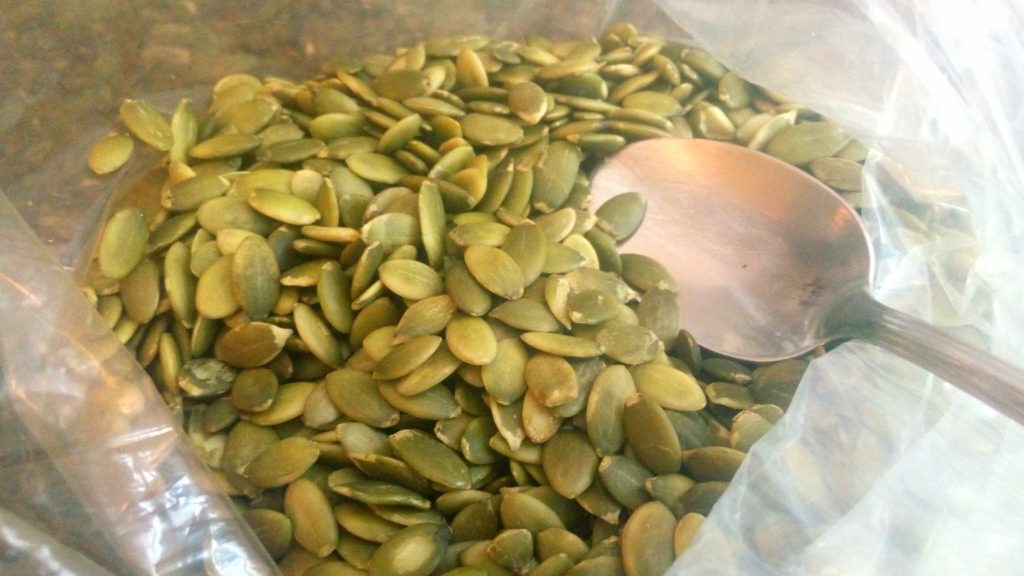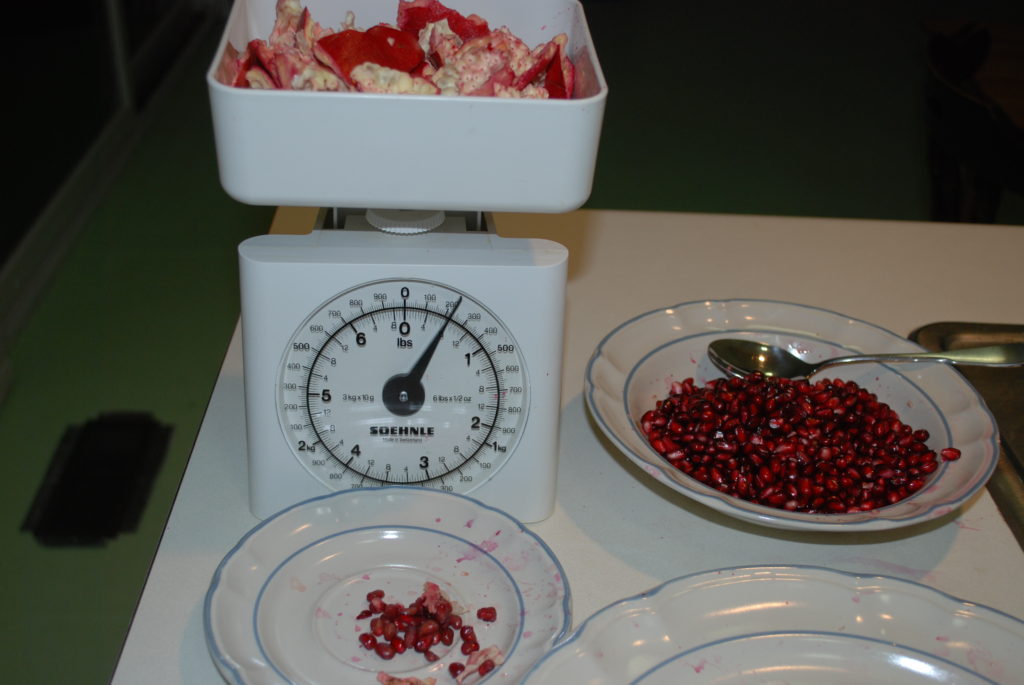Misshapen proteins that collect in the brains of patients who eventually are diagnosed with Alzheimer’s dementia or in patients with ALS may be due to a substitution being made by BMAA a toxin in some types of cyanobacteria (a blue-green algae) in place of the amino acid L-serine.
Trials have begun with dietary intake of L-serine amino acid powder. The powder is readily available for purchase and is non toxic, (available online from bulk supplement companies that may market to weight lifters). Varying doses have been tried and 30 grams per day, slightly more than an ounce, have been found helpful. See: Alzheimer’s Disease – Could New Approach Lead to Breakthrough? (fortune.com).
The main researcher, Dr. Paul Cox, has a team or researchers involved now and has been focused on Alzheimer’s or ALS, however this is a breakthrough that might also help patients with autism as similar misshapen proteins are often found to be involved in that condition too. A review of research on levels of certain amino acid that have brain neurotransmitter roles in patients with autism diagnoses had some mixed results as there is a D-serine and L-serine form and levels of each can vary and whether a research study measured them separately of together was inconsistent, but several did find lower levels for patients with autism compared to the control group without an autism diagnosis.
See: Zheng HF, Wang WQ, Li XM, Rauw G, Baker GB. Body fluid levels of neuroactive amino acids in autism spectrum disorders: a review of the literature. Amino Acids. 2016;49(1):57-65. ncbi.nlm.nih.gov/PMC5241332/.
More recent research has not replicated or reinforced the theory that BMAA is involved in development of Alzheimer’s disease.
The role of the non-essential amino acid BMAA as a causal agent of Alzheimer’s or ALS may involve other factors in addition to chronic buildup of BMAA over time as a review of research about the topic did not conclude a causal relationship of the amino acid with neurodegenerative disorders.
- See: A critical review of the postulated role of the non-essential amino acid, β-N-methylamino-L-alanine, in neurodegenerative disease in humans. Chernoff, et al, 2017, (ncbi.nlm.nih.gov).
- Reanalysis of samples of the suspected source of BMAA from the initial research did not find significant amounts, see: The analysis of underivatized β-Methylamino-L-alanine (BMAA), BAMA, AEG & 2,4-DAB in Pteropus mariannus mariannus specimens using HILIC-LC-MS/MS. Foss et al, 2018, (ncbi.nlm.nih.gov).
- β- N-Methylamino-l-alanine (BMAA) Not Involved in Alzheimer’s Disease. Rauk, 2018, (ncbi.nlm.nih.gov).
The prevailing theory that Beta amyloid protein is a causal agent in Alzheimer’s disease is now being questioned as almost 200 experimental drugs designed to decrease levels of the protein have been found ineffective as treatments for the disease. The protein is involved but likely isn’t the initial problem — regarding Beta amyloid in Alzheimer’s disease: “Brain amyloid is therefore generally accepted as being essential for disease progression but not sufficient on its own to drive disease. The next observable change in brain is impaired glucose metabolism within AD brain,” … “Based on these imaging and biomarker studies it is emerging that brain glucose
hypometabolism (reduced glucose metabolism) and tau toxicity (increased phosphorylation of the Tau protein making it malfunction) likely reflect central events in the progression of AD (1,2,8).” – Zhu et al, 2014, The emerging link between O-GlcNAc and Alzheimer’s disease, (jbc.org/content/early/2014/full.pdf)
So if BMAA is not a causal agent and Beta amyloid itself also isn’t the primary factor in development of Alzheimer’s disease – that leaves us asking what is involved? The answer is likely multifactorial – multiple issues that may vary somewhat for different patients.
Causal Agent versus Multifactorial Disorder.
Causal roles of a toxin traditionally look at toxins individually and as a toxin that would have the same risk for all people or animals if an animal study. Multifactorial disorders however may involve increased risk for some people based on genetic differences from average, or also require nutrient deficiencies to be present or other infectious or inflammatory conditions to also be present chronically.
Cyanotoxins including BMAA and a metabolite, DAB, have been analyzed for risk of cell death or inflammation in murine (aquatic rather than land based species) brain cells. Low doses of some of the cyanobacteria toxins were found to be a concern but not the BMAA or DAB.
- See: Cyanotoxins at low doses induce apoptosis and inflammatory effects in murine brain cells: Potential implications for neurodegenerative diseases. Takser, et al, 2016 (ncbi.nlm.nih.gov).
The research by Dr. Paul Cox with BMAA in Alzheimer’s found that the risk association was with concentrated doses over decades,
(fortune.com), so lower doses may not be a significant risk or possibly risk may also require other factors to be present such as a chronically low intake of L-serine.
Many factors have been associated with increased risk for autism spectrum disorder some involving the early prenatal time of conception and implantation of the fetus and later stages of fetal development. Infants may seem to be developing typically and develop symptoms later as a toddler when rapid changes generally occur in the number of connections between brain cells. Genetic and environmental and nutrient deficiencies may also increase risk for the child later developing symptoms of autism or other cognitive conditions such as Attention Deficit/Hyperactive Disorder (ADHD).
- For more information see: Causal Agent versus Multifactorial Disorder, which I am modifying into an easier to use format from a long series of posts on another of my sites, Believing is the First Step Towards Change.
- An excerpt from that earlier document – Mice bred to be genetically defective in their ability to produce L-serine, a component of sphingolipids, all died as embryos – they never made it to birth. And: “As expected, all brain L-serine-derived lipids such as phosphatidylserine, phosphatidylethanolamine, sphingomyelin, and GD3 ganglioside are greatly reduced in Phgdh knockout mice.” – See: Hirabayashi Y. A world of sphingolipids and glycolipids in the brain–novel functions of simple lipids modified with glucose. Proc Jpn Acad Ser B Phys Biol Sci. 2012;88(4):129-43. ncbi.nlm.nih.gov/pmc/articles/PMC3406307/
- Sphingolipid and serine synthesis are somewhat dependent on each other – inhibiting or increasing one or the other can inhibit or increase production of the other. This may help in treatment of cancer and help with better understanding of intellectual disability conditions as sphingolipid is important for a type of cell common to both. “Sphingolipid levels are tightly linked to serine synthesis, and inhibiting either serine or sphingolipid synthesis can specifically impair the fitness of aneuploid cells “– “Deciphering these mechanisms is important because aneuploidy is associated with diseases including intellectual disability and cancer.” — Hwang S, Gustafsson HT, O’Sullivan C, et al. Serine-Dependent Sphingolipid Synthesis Is a Metabolic Liability of Aneuploid Cells. Cell Rep. 2017;21(13):3807-3818. ncbi.nlm.nih.gov/pmc/articles/PMC5747309/
So is metabolic problems in serine metabolism or lack of protein in the diet an initial problem? or O-GlcNAc?
Serine is considered a non-essential amino acid because it can be made out of the amino acid glycine in normal health, or it can be converted back into glycine. (ScienceDirect/serine) Both glycine and serine are used in large amounts within myelin, the protein used to form the white fatty coating around the connecting channels between nerve cells. There are 18 molecules of serine within a molecule of myelin protein (172 amino acids long per an older source). See: Amino Acid Sequence of the Basic Protein of the Myelin Membrane, Eylar, 1970, (ncbi.nlm.nih.gov/page=3). – an old source but the graphic is viewable.
O-GlcNAc is a type of sugar/amino acid linkage that may have protective effects against Tau protein, another type of protein that seems to collect in the brain tissue of patients with Alzheimer’s disease. “O-GlcNAcylation is a dynamic form of protein glycosylation which involves the addition of β-d-N-acetylglucosamine (GlcNAc) via an O-linkage to serine or threonine residues of nuclear, cytoplasmic, mitochondrial and transmembrane proteins.” – Wani, et al, 2017, O-GlcNAcylation and neurodegeneration, (sciencedirect.com).
(*N-Acetylglucosamine is a type of monosaccharide that can be formed from a molecule of glucose in times of normal health. It is available as a supplement marketed for arthritis pain as glucosamine, generally derived from chitin found in shellfish. It is not typically found in common foods in the human diet.)(Health is a miracle of complex chemistry, in my opinion.)
Food Sources of L-Serine.
The research on BMAA and trials providing extra L-serine as a possible treatment for ALS (Amyotrophic lateral sclerosis, also known as Lou Gehrig’s Disease, a degenerative nerve condition which causes muscle paralysis) is discussed on another site in an article that includes a list of food sources of L-serine. Animal products such as dairy foods and a variety of meats are good sources but sesame, sunflower, and pumpkin and squash seeds are also sources along with hemp kernels, soy products and other beans, and peanuts and pistachio nuts. See: What is L-Serine and What is Research Telling Us? (naturalhealthyconcepts.com).
This very exciting as there is no shortage of L-serine, it is non-toxic commonly available in foods or as a bulk powder supplement, there would be no wait for a drug approval process. The clinical trials help prove efficacy, safety, and dosage recommendations.

Disclaimer: Opinions are my own and the information is provided for educational purposes within the guidelines of fair use. While I am a Registered Dietitian this information is not intended to provide individual health guidance. Please see a health professional for individual health care purposes.
Additional notes 2/19/2018:
- Suspected Link between ALS and Head Trauma (focus on sports trauma like soccer and football) https://www.sfchronicle.com/49ers/article/Suspected-link-between-ALS-and-head-trauma-11016025.php
- Links on brain injury and increased free glutamate https://www.google.com/search?q=brain+trauma+and+increassed+free+glutamate&rlz=1C1CHWA_enUS600US600&oq=brain+trauma+and+increassed+free+glutamate&aqs=chrome..69i57.10991j0j7&sourceid=chrome&ie=UTF-8
- L-Serine deficiency elicits intracellular accumulation of cytotoxic deoxy-sphingolipids and lipid body formation, when L-alanine and L-serine levels are out of balance, when an external source of L-serine is limited, sphingolipid production changes and
1-deoxy-sphingolipids (doxSLs) are created http://www.jbc.org/content/early/2015/04/22/jbc.M114.603860 - Localization of 1-deoxysphingolipids to mitochondria induces mitochondrial dysfunction, “1-Deoxysphingolipids (deoxySLs) are atypical sphingolipids that are elevated in the plasma of patients with type 2 diabetes and hereditary sensory and autonomic neuropathy type 1 (HSAN1). Clinically, diabetic neuropathy and HSAN1 are very similar, suggesting the involvement of deoxySLs in the pathology of both diseases ” suspected mechanism of deoxySLs: “localized to mitochondria, causing mitochondrial fragmentation and dysfunction” which then may lead to neuropathy http://www.jlr.org/content/58/1/42.abstract







